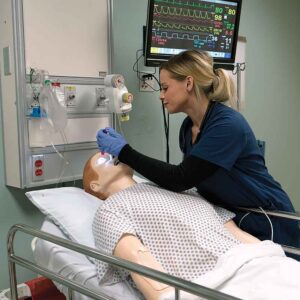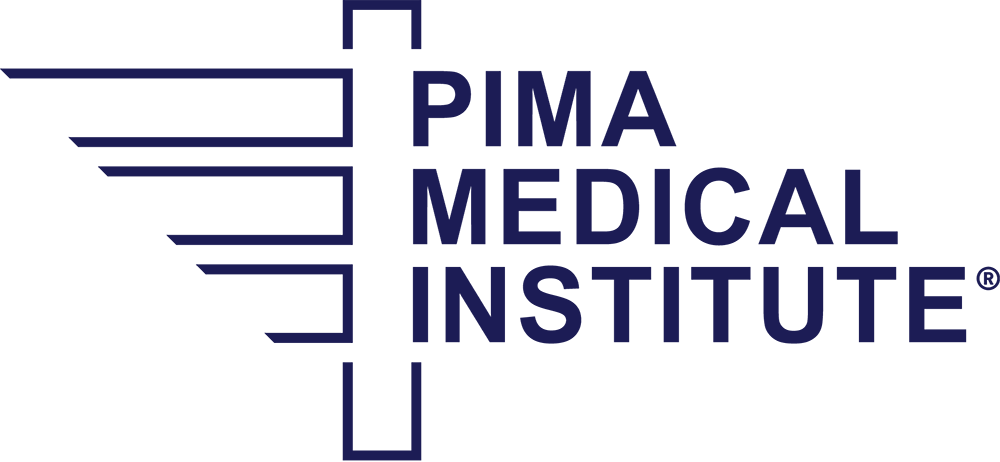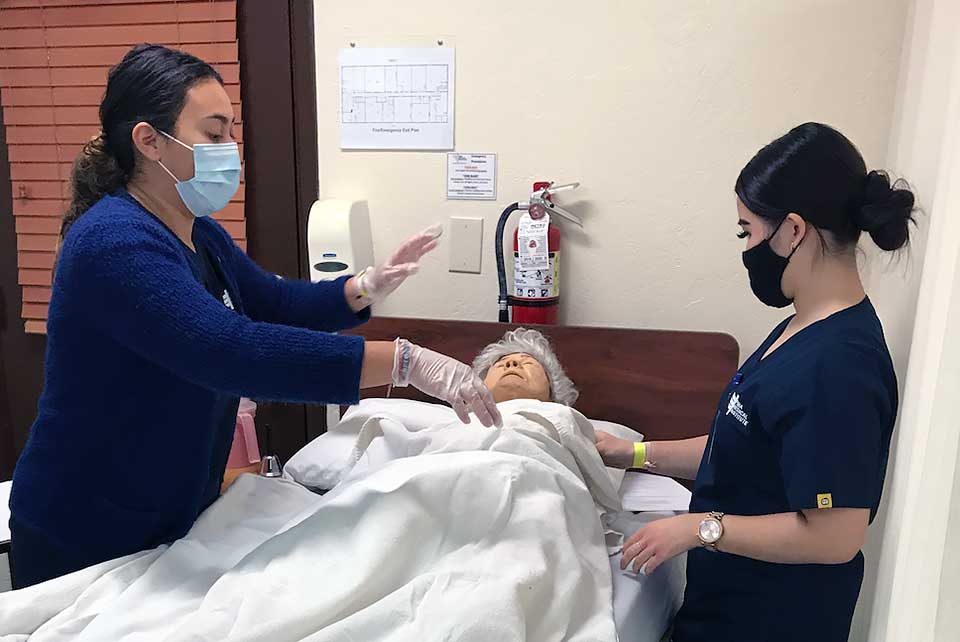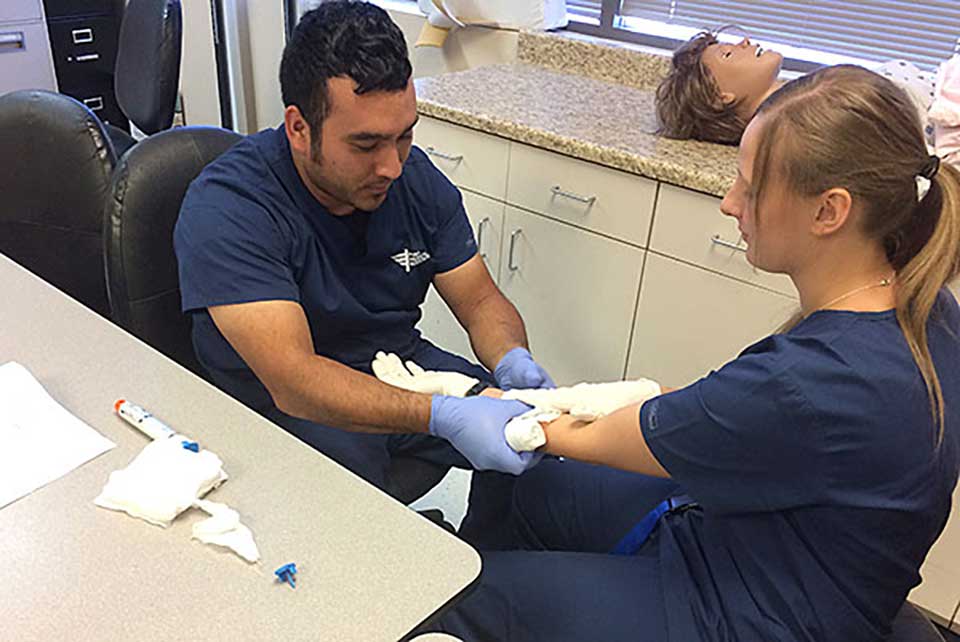Both certified nursing assistants (CNA) and licensed practical nurses (LPN) are great careers to consider when entering the nursing field. The level of education, the scope of responsibility and the pay are the biggest differences between the two.
Let us break it down for you.
Certified Nursing Assistant (CNA)
 Nursing assistant students help each other learn the hands-on training they need to be successful in their career.
Nursing assistant students help each other learn the hands-on training they need to be successful in their career.A certified nursing assistant provides basic care to patients under the supervision of a licensed practical nurse or registered nurse. The CNA has a limited scope of practice with responsibilities that include assisting with infection control, safety and emergency procedures, documenting patient care services and reporting observations and assisting doctors and nurses in diagnostic procedures and therapeutic treatments.
CNAs possess compassion and patience while assisting patients with tasks such as dressing, bathing and feeding. They play an integral role on the healthcare team in hospitals, clinics, assisted living facilities, home healthcare agencies, retirement communities and long-term care facilities.
The CNA program at Pima Medical only takes six weeks to complete, while the LPN program takes 11 months due to requiring more education for the level of care they provide. Training requirements vary by state, and generally, the required training must be complete to be eligible for the certification exam. As a certified nurse, you do not need to be licensed to perform certain duties, mainly because you will work as a nursing assistant.
Licensed Practical Nurse (LPN)
 Practical nursing students learn more advanced care for patients.
Practical nursing students learn more advanced care for patients.Licensed practical nurses are able to do more in patient care than a CNA because they gain more education in their program. Thus, giving them higher pay. They generally work in similar places as a CNA and report to registered nurses or other supervisors. Their daily tasks can include assisting older adults with activities of daily living, measuring vital signs and providing medical attention and care under close contact with patients. They also administer medications, collect data and communicate information to the healthcare team.
LPNs will have more independent authority and will work directly with patients rather than only acting according to orders like CNAs. The LPN does not decide on the plan of care, nor evaluate data. They do assist the registered nurse with patient care functions in a limited role.
Pima Medical’s Practical Nursing program takes about 11 months to complete. Graduates must pass the National Council Licensure Examination (NCLEX-PN) exam, a test for the licensing of practical nurses in the U.S. They must also apply for a license with the board of nursing in the state in which they practice.
No matter which nursing program you decide, you will be making a difference helping people. It just depends on the level of care that you would like to provide. Both nursing career paths are also a great way to gain experience, get your foot in the medical field door and really find out if you want to take the next step and advance your career later on down the line as a registered nurse or more. So, if you’re interested in becoming a certified nurse assistant or licensed practical nurse, take the next step and get started today.



